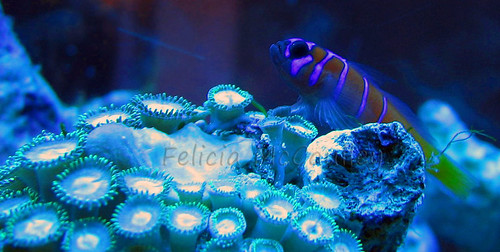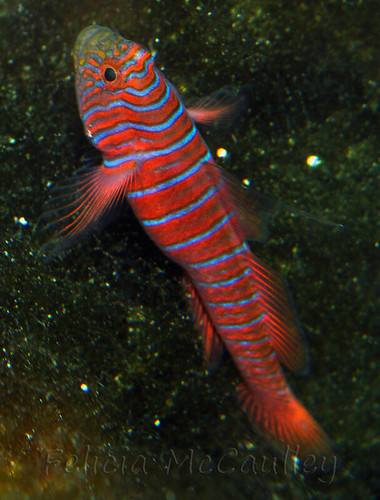
The first question many people ask when considering an aquarium is, "How much is this going to cost?" The total cost of an aquarium will depend on what types of animals you'll be keeping. It will also depend on the brands and models of the equipment you choose. In this blog I will try to make a loose estimation of the total cost of my aquarium and its current equipment and livestock. Keep in mind that I didn't spend all this money right away, it took a couple years to collect all of this stuff. I look for sales, shop online, and buy used equipment from local people.
I only wish that I had researched more before I bought certain things. I have an entire storage room full of aquarium equipment that I no longer use, but can't bear to throw away, because I paid for it!

Since I have two aquariums plumbed together with an overflow box, let's just consider them as one since they share all their equipment. The top aquarium is a 55 gallon "reef" tank. It has mostly photosynthetic Gorgonians,
Actinodiscus sp. mushrooms,
Zoanthus sp. polyps, a
Turbinaria sp., Duncanopsammia sp., and other miscellaneous corals. It has about ten gobies, a pipefish, two small
wrasses, and some small inverts. I bought it during a "dollar a gallon" sale at Petco a few years ago. I paid only
$55.00! The lower aquarium is a 37 gallon aquarium with five seahorses, a pipefish, three Brotulids, non-photosynthetic corals like Gorgonians, several
Tubastrea sp., a pink sea cucumber, and other inverts. This aquarium (along with tons of other useful stuff) was given to me by my friend Monica, but a similar aquarium would likely cost around
$50.00 because it's an unusual size.
Syngnathids do best at temperatures lower than 74 degrees Fahrenheit, and two of the Brotulids I keep are sub-tropical to temperate species. Even in Wisconsin, it gets warm in the summer, so I needed a chiller. My chiller was one of my first aquarium purchases. I bought an off brand 1/10 horsepower chiller on Ebay used for a little over
$300. After doing some research, I discovered that I could've gotten a
similar model brand new for about the same price. I didn't make that mistake again.
I've had three different canister filters over the years, but my favorite so far has been my Fluval 405. I started with a Magnum 350, but got rid of that soon after nearly electrocuting myself. (it's a long story, but basically, the o-ring fell off into the canister after I reattached the lid, which caused water to spray out of the canister in all directions onto my power strip, which then started to smoke, prompting me to panic and push the little red switch...) My second canister filter was a Filstar XP3. I really liked this filter, but after a couple months, an air pocket developed a couple inches below the lid, and it started to leak a bit. Since the company is located in France, I didn't get much customer assistance. I later got a
Fluval 405, which runs about
$235.00, and haven't had a problem since. I do miss the perfectly square Filstar XP3, though. It was much easier to customize media.
I've also had several different lighting systems, but the one currently on my reef aquarium is a 48"
Dual Satellite Compact Fluorescent fixture which costs about
$270.00. My non-photosynthetic tank has a light, too, but just enough for me to view them. It's a
single strip light, costed about
$35.00. I also have a light on my
refugium, a
Coralife Aqualight Single Compact Fluorescent Strip Light. I got the 24" freshwater version (the color temperature is good for macroalgae) for about
$70.00. I have countless ballasts, bulbs, and strip lights in my storage room that I won't factor into the ultimate cost.
I've had two different skimmers so far. I bought a Prism Pro a few years ago, but I removed it from the aquarium after a few months because it was such a pain to adjust all the time. I was constantly adjusting the water flow and air valve. After I started getting a lot of hair algae, I decided it was time for a new skimmer. I got (and
blogged about) my
Hydor Performer in January, and I love it. The smallest model runs about
$320.00, but it is worth it.
I consider my refugium an essential part of my aquarium. It provides food for my pipefish and seahorses, helps reduce nitrates by growing macroalgae, and gives me a place to put really tiny shrimp and fish when they first come out of quarantine and I want to watch them closely. I have the the large
AquaFuge External Hang-On Refugium for
$165.00.
My aquarium stand was used, so I only paid about
$50.00 for it. But you could expect to pay between
$100 and
$150 for a
similar new one. I have a stand for my 37 gallon tank, but my leopard gecko tank is on it right now. It was given to me with the aquarium. It's not pretty, but I just have my seahorse tank on the kitchen floor (to the dismay of my husband).
There are other little things to factor into the total cost, like algae scrubbers, food, filter media, electricity, etc. Including electricity it costs approximately
$75.00 a month maintaining my three aquariums. Luckily, my electricity is included in my rent.
I was really lucky when I bought my
Live Rock. A friend of mine was moving to a different state and couldn't take her aquarium with her. She had about 50 pounds of dry rock left over and sold it to me for $50.00. Another friend placed on online order for premium branch live rock and accidentally ordered too much. He sold me 30 pounds for about a dollar a pound as well. If you are buying
coralline algae encrusted live rock online, you can expect to pay around
$4.75 a pound including shipping. If you buy from a local shop, expect to pay between $7.00 and $9.00 a pound, depending on where you live. You'll probably want about a pound or a pound and a half for a reef aquarium. Keep in mind that you'll be adding live rock later when you buy corals attached to rock.
I can't say for sure how much I've spent on livestock (fish, inverts, and corals) over the years, but it's likely to be my most costly category. I have a "thing" for weird and unusual fish and inverts. I estimate that I have more than
$1,500 worth of livestock in my aquarium right now. That's not counting the animals and corals I've lost. You certainly don't have to spend that much on your livestock, though. You can get inexpensive, beautiful species and enjoy them just as much as the rare, expensive ones. No matter what species you get, make sure you are purchasing healthy livestock through
reputable retailers that have guarantees. And if you are buying seahorses, make sure you buy
True Captive Bred seahorses. They are more expensive at about $60 each (depending on the species) than
Net-Pen raised and
Kelloggi seahorses, but you save money in the long run on medicines and replacements.
So that's a grand total of (approximately, give me a break, I was an English major)
$3,130.00. I know what you're thinking, that's a lot of money for the ugly tank pictured above. I could have easily spent $10,000 on a flashy Acropora tank, if I had the money.
Now that I've typed this all up, I am really hoping that my husband never reads this post. I am lucky because he is so supportive of my hobby. It also helps that I get a discount where I work!



























